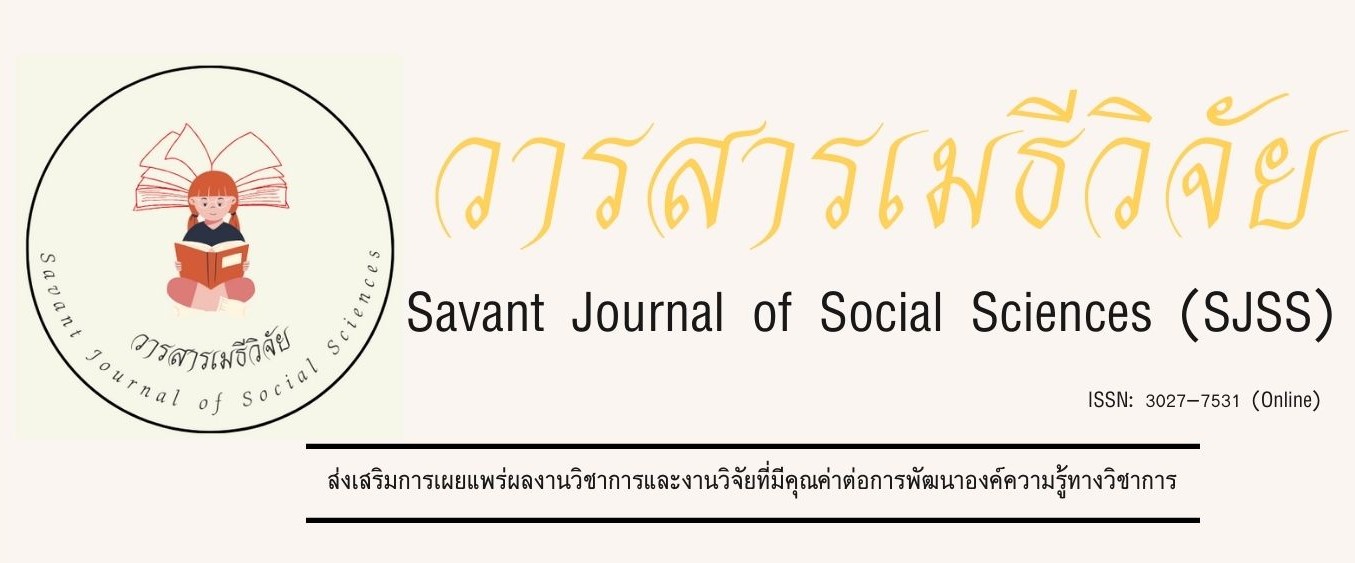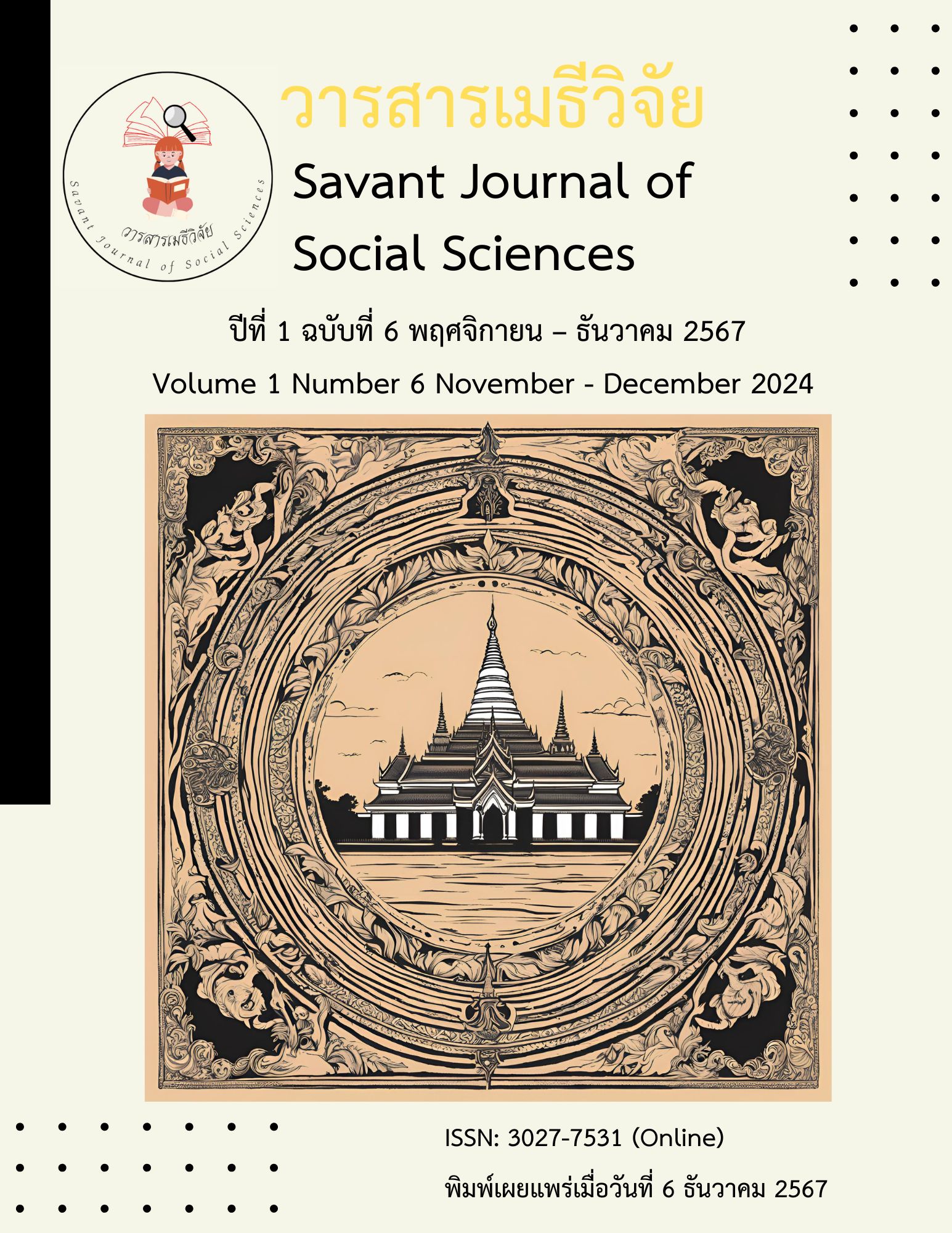The Development of Steam Education Learning Activities to Enhance the Artistic Creative Skills of Mathayomsuksa 1 Students
Keywords:
Art Learning Activities, STEAM Education, Creative WorksAbstract
The purpose of this research is to: 1) develop STEAM-based learning activities to enhance students' artistic abilities and create artistic works; 2) To try out learning activities that align with STEAM Education in order to enhance secondary school students' abilities to create artistic works 3) to study the opinions of students who engage in STEAM education-based learning activities. This research is preliminary experimental research. 30 Mathayomsuksa 1 students from Piboonbumpen Demonstration School, Burapha University, were the sample group used in this study. They were selected through purposive sampling from the First semester of the academic year 2023. The research tools are 1) STEAM Education-based art learning activities. 2)A form for evaluating creative work, and 3) An interview form for gathering feedback from students on STEAM Education learning activities. Data were analyzed with descriptive statistics and content analysis. The results showed that 1) learning activities using the STEAM Education approach to enhance grade 7th students' abilities to create artistic works had a consistency index ranging from 0.80 to 1.001. 2) The findings of the trial of applying learning activities based on STEAM Education to enhance the ability to create artistic works are as follows: 2.1) Compare MathayomSuksa 1 students' academic achievement scores before and after their studies. It was found that when testing statistics t = 18.115, Sig =.00. The mean academic achievement scores of MathayomSuksa 1 students before and after the study were significantly different at. 05. 2.2) The average scores achieved by students in the creation of artworks after the experiment. It was found that the students' overall average of creating artworks was high. 3) The students' opinions on the learning activities based on STEAM Education to enhance the ability to create artworks were high.
References
ณัฐวรรณ เฉลิมสุข, กฤตย์ษุพัช สารนอก และ กิตติพร ชูเกียรติ. (2562). STEM EDUCATION กับการพัฒนาทักษะการคิดเชิงสร้างสรรค์ที่บูรณาการเครื่องมือทางปัญญาผ่านคลาว์ดคอมพิวติ้ง. การประชุมวิชาการนิทรรศการการเรียนการสอน ประจำปี 2562, 31 กรกฎาคม 2562 ณ มหาวิทยาลัยศรีปทุม กรุงเทพมหานคร : หน้า 49-66.
เดือนเพ็ญ ศักดิ์ศรีวัน และวิสูตร โพธิ์เงิน. (2563). การพัฒนากิจกรรมศิลปะ ตามแนวคิด สตีมศึกษา ร่วมกับการใช้แหล่งเรียนรู้ในท้องถิ่นเพื่อส่งเสริมผลงานสร้างสรรค์ ของนักเรียนชั้นประถมศึกษาปีที่ 3. วารสารศิลปากรศึกษาศาสตร์วิจัย, 12(2), 53-70.
ภาวินี เทียมดี, ปิยวรรณ พันสี และยุทธนา ชัยเจริญ. (2565). การจัดกิจกรรมการเรียนรู้บูรณาการ STEAM Education ที่มีผลต่อผลสัมฤทธิ์ทางการเรียนวิทยาศาสตร์ เรื่อง พลังงานและการเปลี่ยนรูปพลังงาน และความพึงพอใจต่อการจัดการเรียนรู้. วารสารศึกษาศาสตร์ศาสตร์ มหาวิทยาลัยศิลปากร, 20(2), 293-306.
ภิญโญ วงษ์ทอง. (2562). ผลของการจัดกิจกรรมการเรียนรู้บูรณาการ STEAM education ที่มีต่อผลสัมฤทธิ์ทางการเรียนวิทยาศาสตร์ ทักษะการคิดอย่างมีวิจารณญาณ และความพึงพอใจของนักเรียนชั้นประถมศึกษาปีที่ 4. วารสารหน่วยวิจัย วิทยาศาสตร์ เทคโนโลยี และสิ่งแวดล้อมเพื่อการเรียนรู้, 1(10), 94-110.
อณวัฒน์ เหมืองทอง และวิสูตร โพธิ์เงิน. (2023). การพัฒนากิจกรรมการเรียนรู้ศิลปะการออกแบบผลิตภัณฑ์ โดยใช้กระบวนการคิดเชิงออกแบบเพื่อส่งเสริมความเป็นนวัตกรและผลงานสร้างสรรค์ของนักเรียนชั้นมัธยมศึกษาปีที่ 4. เรียนรู้. วารสารศึกษาศาสตร์ มหาวิทยาลัยศิลปากร. (21)1, 339-352.
Kim, Y., & Park, N. (2012). The effect of STEAM education on elementary school student’s creativity improvement, computer applications for security. Control and System Engineering, 399, 115-121.
Kim, Y., & Park, N. (2012). Development and application of STEAM teaching model based on the Rube Gddbery’s invention. Computer Science and its Applications Lecture Notes in Electrical Engineering, 203(1), 693-698.
Santrock, J. W. (2009). Psicologia educaciona. 3th ed. São Paulo, Brazil: McGraw-Hill.
Yakman, G. G. (2008). STEAM Education: An overview of creating a model of integrative education. Retrieved from http://www.iteaconnect.org/Conference/PATT/PATT19/Yakmanfinal19.pdf






